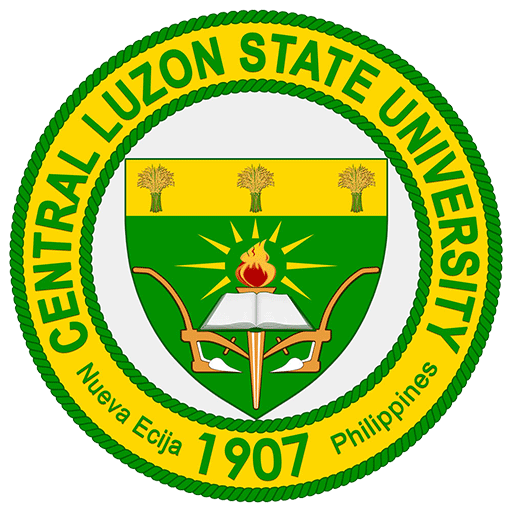Dr. Garry A. Benico, Associate Professor, Department of Biological Sciences,
College of Science

From the comforts of our beloved, landlocked Central Luzon to the expansive coasts and marine environs of the country and the Southeast Asian region, let us peruse two of the papers published by Dr. Garry A. Benico, Associate Professor from the Department of Biological Sciences and an expert in Aquatic Biosciences. The research papers deal with molecular phylogenetic studies and ultrastructure elucidation of harmful marine dinoflagellates and raphidophytes associated with fish mortalities . The first paper is entitled “Thecal tabulation body scale morphology and phylogeny of Heterocapsa philippinensis sp. nov. (Peridiniales, Dinophyceae) from the Philippines” published in the European Journal of Protistology (https://doi.org/10.1016/j.ejop.2021.125811
). The second paper is entitled “The harmful raphidophyte Chattonella (Raphidophyceae) in Western Pacific: Its red tides and associated fisheries damage over the past 50 years (1969-2019)” published in the international journal Harmful Algae (https://doi.org/10.1016/j.hal.2021.102070).
From the comforts of our beloved, landlocked Central Luzon to the expansive coasts and marine environs of the country and the Southeast Asian region, let us peruse two of the papers published by Dr. Garry A. Benico, Associate Professor from the Department of Biological Sciences and an expert in Aquatic Biosciences. The research papers deal with molecular phylogenetic studies and ultrastructure elucidation of harmful marine dinoflagellates and raphidophytes associated with fish mortalities . The first paper is entitled “Thecal tabulation body scale morphology and phylogeny of Heterocapsa philippinensis sp. nov. (Peridiniales, Dinophyceae) from the Philippines” published in the European Journal of Protistology (https://doi.org/10.1016/j.ejop.2021.125811
). The second paper is entitled “The harmful raphidophyte Chattonella (Raphidophyceae) in Western Pacific: Its red tides and associated fisheries damage over the past 50 years (1969-2019)” published in the international journal Harmful Algae (https://doi.org/10.1016/j.hal.2021.102070).


The first paper is especially significant as it highlights Dr. Benico’s discovery of a novel marine photosynthetic protist Heterocapsa philippinensis, isolated from the Philippines. The research described the morphology and phylogeny of the new species, using electron microscopy (SEM and TEM) and molecular techniques (DNA extraction, PCR amplification and phylogenetic analysis). Of the varied morphological characters of the genus, Dr. Benico critically examined the ultrastructural details of the organism’s cellular covering or what they referred to as “thecal plates”, specifically the second intercalary plate (2a) which he discovered as a good character to distinguish H. philippinensis from other Heterocapsa species; and thus reported as a new species in the scientific community. In addition, some Heterocapsa species have been described without molecular data, thus underscoring the novelty of this discovery i.e., additional molecular sequences of Heterocapsa now deposited and available in the GenBank.
On the other hand, the second paper co-authored by Dr. Benico with other scientists from Japan, Russia, China, South Korea, Thailand, Vietnam, Malaysia, and Singapore has important implications to the issue of fishery resources. This strikes closer to home, as we all know how fisheries species contribute substantially to the Filipino diet, with fishes being our main source of protein. According to the paper, harmful algal blooms cause mortalities of farmed aquatic organisms and Chatonella sp. is a renowned causative genus severely affecting fisheries productivity due to mass mortalities on finfish such as salmon, yellowtail and bluefin tuna, as well as benthic organisms such as crabs, shrimps and shells, especially in East Asia. Fishkill events caused by Chatonella in the last 50 years was assessed by the team, with its first report occurring in Seto Islands, Japan in 1969, eventually expanding to areas including the Philippines in the 1990s. It appears that Chatonella is widely distributed in the country and molecular identification done in this study indicates the occurrence of Chatonella subalsa in Luzon Island as well as other Chatonella species in the Visayas. Notably, a major fishkill event in Bolinao, Pangasinan (Azanza and Benico, 2017) was reportedly due to the occurrence of Chatonella bloom. Elsewhere, Chatonella marina has been identified as a causative agent for severe fishery mortalities in East Asia. Furthermore, the morphological identification of Chatonella is particularly challenging due to its high plasticity in terms of its cell shape, size, posterior tail and oboe-shaped mucocyst. Hence this paper contributed to the body of knowledge, not only on Chatonella’s distribution and frequency of occurrence in the East and Southeast Asian regions, but also highlighting the need to further study the differences of C. marina and C. subalsa complex, its damaging impacts to fisheries and provide a more accurate picture of management and monitoring of harmful algal blooms or HABs in the region.
PUBLICATIONS
Candida albicans Biofilm Inhibition by Ethnobotanicals and Ethnobotanically-Synthesized Gold Nanoparticles
Philippine Ethnobotanicals Downregulate lasR Expression Linked to Quorum Sensing-Mediated Biofilm Formation in Pseudomonas aeruginosa
- OVPAA, IAO conduct executive session on internationalization
- Ten Pre-Service Teachers Join the SEA Teacher Program
- CLSU student, chosen for SSEAYP 2022
- CLSU-BSHM students win in the Philippine Culinary Cup, Executive Chef Networking
- Two BSIT Students advance in the ASEAN Data Science Explorers 2022 (ASEAN DSE) competition
In an effort to promote global opportunities and foster enduring international partnerships, the Council...
Aligned with SDGs 4 (Quality Education) and 17 (Partnership for the Goals), ten pre-service teachers...
Dan Paul Aaron Torres, a fourth-year BS Chemistry student at Central Luzon State University, has been...
Bachelor of Science in Hospitality Management students of the Central Luzon State University participated...
The ASEAN Data Science Explorers 2022 competition organized by the ASEAN Foundation and SAP Asia Pte...
